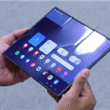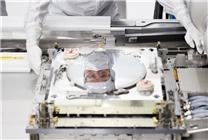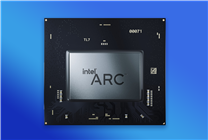Revolutionizing Chip Production: The Rise of Substrate’s X-ray Lithography
Summary
- Challenge to Dominance: Substrate aims to disrupt the semiconductor industry by developing innovative lithography machines to rival ASML’s EUV technology.
- Cost Reduction Potential: The new X-ray-based technology could significantly lower production costs from $100,000 to approximately $10,000 per advanced wafer.
- Ambitious Goals: Substrate is targeting mass production by 2028 to enhance U.S. competitiveness in semiconductor manufacturing.
In the ever-evolving landscape of semiconductor technology, advanced chip production technologies are becoming increasingly reliant on extreme ultraviolet (EUV) lithography. Currently, ASML, a Dutch company, holds a near-monopoly on the manufacturing of EUV lithography machines, rendering it a pivotal player in the industry. However, an American startup, Substrate, is poised to challenge ASML’s supremacy by introducing an alternative lithography technology.
Substrate’s Vision
Substrate’s primary objective is to establish a foundry business within the United States, taking direct aim at industry giants like TSMC (Taiwan Semiconductor Manufacturing Company). Before diving into full-fledged production, Substrate focuses on developing new lithography machines designed to rival ASML’s offerings. Given the exorbitant costs associated with current EUV lithography—around $200 million for existing machines with a numerical aperture (NA) of 0.33 and about $400 million for next-gen machines with NA 0.55—the need for a more cost-effective alternative is pressing.
A Breakthrough in Lithography
The most notable development from Substrate is its X-ray-based lithography machine. Utilizing a particle accelerator, this new technology aims to produce a shorter wavelength light source, fundamentally altering the cost dynamics of semiconductor manufacturing. The company estimates that their innovation could cut production costs of advanced wafers by a staggering 90%, bringing them down from an estimated $100,000 to approximately $10,000.
James Proud, the founder of Substrate, confirmed that the company is targeting mass production by 2028. This timeline indicates a significant commitment to boosting U.S. chip production, thereby enhancing its global competitiveness against Chinese manufacturers.
Investment and Support
Substrate has successfully secured $100 million in funding at a valuation of $1 billion, garnering interest from several U.S. venture capital firms. While currently lacking direct government support, the attention from U.S. officials is likely to grow, especially considering the national interest in advancing domestic semiconductor capabilities.
Technical Challenges
Despite the promising advancements, Substrate’s approach isn’t without its challenges. While using X-rays for lithography isn’t a novel concept—earlier attempts were made in the United States and China—the technology comes with significant drawbacks. The efficiency of the light source is currently low, and the operational requirements for masks and photoresists are exceptionally high. This necessitates the development of new photoresist materials that are compatible with X-ray lithography, introducing additional complexity.
Moreover, the existing chip technology landscape will require a foundational rethinking to accommodate X-ray lithography, as these machines do not easily integrate with current manufacturing processes.
Industry Implications
The ambition to move toward X-ray lithography could serve as a pivotal turning point in the semiconductor industry, especially as the United States puts increasing emphasis on self-reliance in this critical sector. However, skepticism remains. Detractors caution that if X-ray technology were as viable as proposed, earlier efforts to commercialize it would not have lagged behind EUV advancements. In the current climate, Substrate’s initiative might be viewed as a high-risk venture, albeit one that embodies a broader hope for innovation in U.S. semiconductor manufacturing.
Conclusion
As global competition in semiconductor production intensifies, Substrate’s initiative offers a bold perspective on the potential to subvert established industry norms. With the ambition to revolutionize lithography techniques through cost-effective alternatives, this startup reflects the aspirational spirit driving the future of American technology in the semiconductor landscape.
As the landscape continues to evolve, the success or failure of this initiative will likely have lasting implications for the semiconductor industry, particularly in balancing innovation with pragmatic execution. The eye of the industry will remain focused on Substrate as they move toward their ambitious goals for 2028 and beyond.







